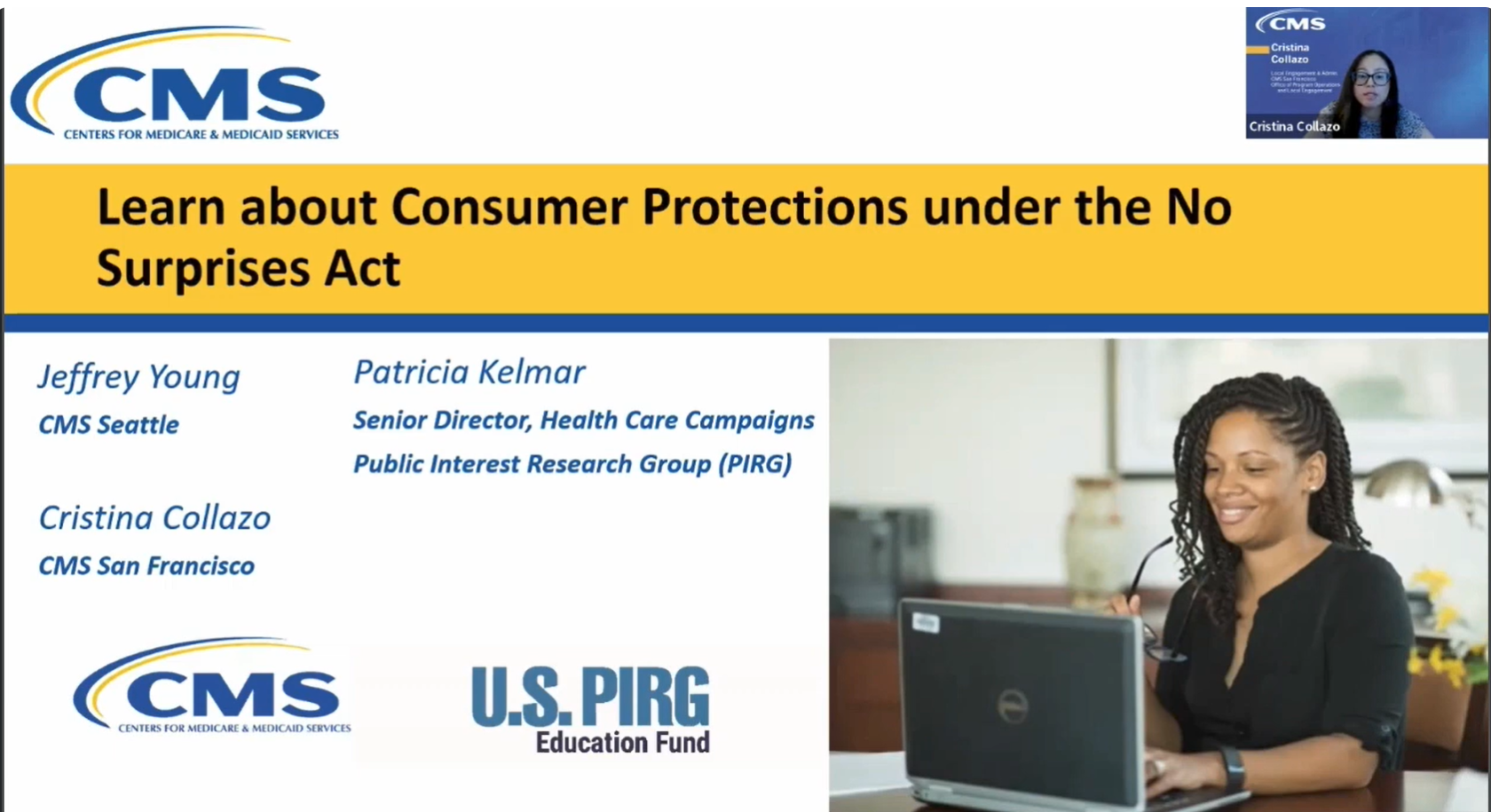
PIRG Comments Partially Reflected in CMS Final Rule on Hospital Price Transparency
While the agency responded to most of our concerns for the price transparency rules, it wasn’t always a satisfactory answer.

In September, PIRG provided recommendations to the Centers for Medicare and Medicaid Services (CMS) to improve its proposed rules related to hospital price transparency. Over 12,000 PIRG members also signed onto a public comment urging the agency to make it easier to see prices for hospital care before they receive treatment. This advanced information gives patients power to hold hospitals accountable for their billing charges.
CMS released the final rule on hospital price transparency in November, which will be implemented in phases over the next few years. While the agency responded to most of our concerns, it wasn’t always a satisfactory answer. For example, the final rule makes it simpler to find pricing information, but it does not make it usable with clear, dollars-and-cents prices. The chart below goes into further detail about where we ended up, and then we briefly discuss how we can keep pushing for clear health care prices.
Comparison of PIRG comments to CMS Final Rule
| Our Recommendation | Does the final rule align with our recommendation? | CMS Final Rule & Determinations | Analysis/Additional Info |
| Use one standard form for all hospitals to show their prices. This would make it easier for consumers to read them on each hospital website. Currently, many hospitals who have posted prices on their websites use very difficult-to-understand file formats or organization methods. Because every hospital is different, it’s hard for people to find and understand price information, or to compare the prices to prices at other hospitals. | Yes |
|
The posted data will be more readable and usable with a consistent, uniform template. |
| Require files to be an accessible Excel file. Currently, some price files are too big to download, or in formats that most consumers can’t read. | No |
|
These file types will be easier for consumers to download and make use of, but Excel would have been easier. |
| Require hospitals to post cash and insurer-negotiated prices in dollars and cents. This would allow patients to make informed decisions about their care, and to compare prices apples-to-apples. | No |
|
While price estimate tools can be useful, they often require specific insurance information in order to get an estimate, and the estimate can be inaccurate. One study found vast differences between online price estimates and ones provided over the phone by the facility. Other tools like good faith estimates are not applicable to every patient. |
| Do not allow the addition of “consumer-friendly expected allowed amount”. This term would allow hospitals to rely on estimates, algorithms, and percentages rather than provide true dollars and cents prices, and is not as “consumer-friendly” as it may appear. | No |
|
Formulas are used to arrive at a number that appears on the bill to the payer and/or patients. The hospital should be able to provide that number to comply with these rules, not an estimate or average. |
| Create meaningful ways to ensure compliance. We had concerns that this rule would focus on determining whether or not hospitals have complied rather than on enforcement mechanisms. | Partially |
|
It’s hard to say how these updates will play out. The difference between an audit and a “comprehensive compliance review” is not clear, so CMS will have to show how this rule change affects compliance enforcement.
Other changes to the rule seem minimal and do not focus on improving enforcement mechanisms but rather how CMS monitors hospitals and assesses compliance with the rule. |
| Ensure that an executive or high-level officer of the hospital is bottom-line responsible for the information provided under transparency requirements. This would prevent hospitals from rubber-stamping pricing files, and provide corporate accountability for compliance. | Partially |
|
While requiring these attestations is good, it is hard to say whether there will be any significant change to hospital behavior because of it. They will clarify some of the files, assuring users that any blanks are intentional rather than missing data. It could also potentially be used as proof of malicious noncompliance if hospitals fail to provide these attestations. However, it’s unclear whether that will make hospital executives more accountable to providing accurate pricing information. In addition, CMS might use these attestations as a shortcut to assess compliance rather than completing a full review. |
Additional Changes from the CMS final rule
There are some additional changes beyond the recommendations that PIRG provided that will likely improve the price transparency goal.
| Additional Determinations from CMS Final Rule | Analysis/Additional Info |
|
This will make finding pricing information infinitely easier, eliminating any need to dig through webpages to find the right page and file. |
|
This will clarify to which facilities the pricing information applies. Currently, the files are not always clear, making it difficult to identify and apply the pricing information with accuracy.
It will also ensure that the files remain up-to-date. |
|
This will clarify line-items that are listed with the same billing code but different prices. |
“Site-neutral” recommendation rejected
Finally, CMS did not include “same service, same price” policies in the final rule. PIRG recommended that the agency expand site-neutral policies to eliminate price differences based on location or facility type to help contain cost increases for certain types of care. However, the agency response was that the proposed rule did not cover this issue, so the final rule would not address it. The agency did leave the door open to consider these policies in future rulemaking decisions.
Next steps
While the final rule makes some improvements, overall more can be done to make hospital price transparency usable and enforceable. PIRG has been advocating for additional improvements, and Congress has begun to listen. The House of Representatives recently passed the Lower Costs, More Transparency Act with a bipartisan vote. This bill further strengthens price transparency requirements with better enforcement power and mandates “dollars and cents” prices not only from hospitals but also other kinds of providers. Unlike the rule, it would give us same service, same price requirements for certain services, too. We are working to win Senate approval for this important Act in January 2024.
Topics
Authors
Maribeth Guarino
High Value Health Care, Advocate, U.S. PIRG Education Fund
Maribeth educates lawmakers and the public about problems in health care and pushes for workable solutions. When she's not researching or lobbying, Maribeth likes to read, play games, and paint.
Find Out More

Medical bill fees and strange add-on charges

Why hasn’t the government protected our rights in the medicine we helped to fund?

The FTC is cracking down on big healthcare companies
